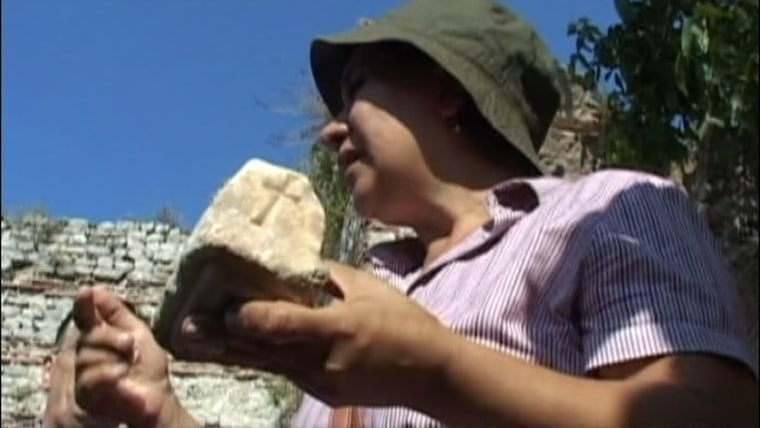
Turkish archaeologists say they have found a stone chest in a 1,350-year-old church that appears to contain a relic venerated as a piece of Jesus' cross.
The artifacts were unearthed during a dig at Balatlar Church in Turkey's Sinop Province, and displayed this week by excavation team leader Gülgün Köroğlu. “We have found a holy thing in a chest. It is a piece of a cross," the Hurriyet Daily News quoted her as saying.
Köroğlu, an art historian and archaeologist at Turkey's Mimar Sinan University of Fine Arts, said the team suspects that the chest served as a symbolic coffin for the relics of a holy person — and that the fragments within it were associated with Jesus' crucifixion.
She showed reporters at the site a stone with crosses carved into it. "This stone chest is very important to us. It has a history and is the most important artifact we have unearthed so far,” she said. The chest has been taken to a laboratory for further examination.
Köroğlu said her team has been working since 2009 at the church — which was built in the year 660, during the Byzantine era. She said the ruins of an ancient Roman bath were also found at the site, along with more than 1,000 human skeletons.
Fragments associated with Jesus' cross were sent far and wide as relics in ancient and medieval times. According to legend, St. Helena — the mother of Emperor Constantine — found the cross in Jerusalem and distributed pieces of the wood to church leaders in Jerusalem, Rome and Constantinople (present-day Istanbul in Turkey).
Later in the 4th century, St. Cyril of Jerusalem said the whole world "has been filled with pieces of the wood of the cross." St. Gregory of Nyssa said the wood had "saving efficacy for all men, though it is, as I am informed, a piece of a poor tree, less valuable than most trees are."
The 16th-century Protestant theologian John Calvin famously joked that if all the pieces linked to the "true cross" were assembled in one place, "they would make a big shipload." However, the Catholic Encyclopedia quotes the 19th-century French archaeologist Charles Rohault de Fleury as saying that all of the cataloged relics would amount to less than a third of the wood in a 3- to 4-meter-high (10- to 13-foot-high) cross. Relics linked to Jesus' cross can be found in many churches, including the Shrine of the True Cross and the Co-Cathedral of the Sacred Heart in Texas.
More about biblical archaeology:
- 3,000-year-old palace linked to King David
- Gallery: The archaeology of Christianity
- NBC News archive on biblical archaeology
Alan Boyle is NBCNews.com's science editor. Connect with the Cosmic Log community by "liking" the NBC News Science Facebook page, following @b0yle on Twitter and adding +Alan Boyle to your Google+ circles. To keep up with NBCNews.com's stories about science and space, sign up for the Tech & Science newsletter, delivered to your email in-box every weekday. You can also check out "The Case for Pluto," my book about the controversial dwarf planet and the search for new worlds.